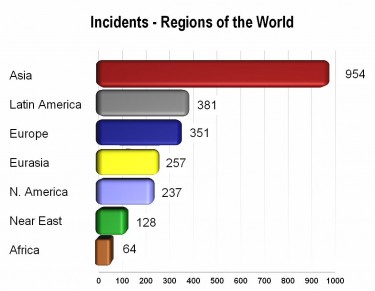The fight against counterfeit is a global struggle [Fr]. An opportunity to explore the different areas affected by this modern scourge, from art to leather goods, perfumes, textiles, cleaning products and even headphones. Although counterfeiting has harmful consequences for security, the environment, social law, or even the economy in most of the sectors involved, there is an area in which fakes have even more devastating effects: the pharmaceutical industry. This activity is far from being marginal: the World Health Organisation (WHO) estimates that 10% of medicines manufactured are counterfeit.
A huge underground market
The counterfeiting of medicines affects all countries, without exception, regardless of their state of development. Sometimes it reaches staggering proportions, for instance half the medicines for the treatment of malaria are fake [Fr]. In Europe, the counterfeiting of medicines represents 24% of customs seizures, more than cigarettes. In 2010, it generated a profit of 75 billion dollars. More than the drug trade. It's a serious public health issue, which is being tackled strenuously, using measures that are appropriate and effective to varying degrees.
Measures are often effective, but still not enough
At the forefront of this battle in France, in 2003 LEEM (the French Pharmaceuticals Companies Association) created an anti-counterfeiting committee. It ensures a continuum linking manufacturers and public authorities (in the areas of customs, justice, etc.). More of a watchdog than a real strike force, this committee is nevertheless at the forefront in the process of modernising anti-counterfeiting techniques. There are all kinds of innovations: sealed containers, barcodes, holograms on packaging, etc.
But the fight against counterfeiting also entails greater cooperation between manufacturers and law enforcement agencies. For this reason, around thirty major pharmaceutical groups are working side by side with Interpol to improve the detection of fakes. These are all necessary measures, but still not enough to eradicate a volatile enemy who, in many cases, is ensconced in the virtual world.
Dealing with the Counterfeit Market on Internet
It is no secret to anyone that the Internet is one of the main reasons for the explosion in medicine counterfeiting. In an article in Le Point [Fr], Christian Peugeot, President of Unifab, the association of French companies involved in the fight against counterfeiting, blames the “mushroom-like sites”, quickly set up, and quickly removed, which succeed in “ensnaring consumers”.
Once again, international collaboration has paid off. Last September and October, a large-scale internet crackdown , coordinated by Interpol, the World Customs Organisation (WCO) and the Permanent Forum on International Pharmaceutical Crime (PFIPC), culminated in a record seizure. In France, more than 427,000 medicines were intercepted. 236 illegal sites were shut down. An excellent result. However, between two lightning raid operations, counterfeit medicines have started to proliferate again on the net. Their production will only slow down if these illicit sites are systematically monitored by Interpol. Certainly, this will be costly, but can you really put a price on people's health?







